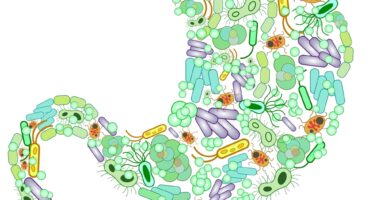New small molecule feeblin may help in developing lupus therapies
Molecule found to block interaction of 2 proteins tied to inflammation

A team of scientists in Austria discovered a small molecule — now called feeblin in a nod to a Nobel laureate— that prevents the activation of immune signaling pathways implicated in systemic lupus erythematosus (SLE).
This molecule was found to block the interaction of two key proteins, known as TASL and SLC15A4, that drive the disease process in patient cells.
Scientists now believe the small molecule may serve as a starting point for the development of anti-inflammatory treatments for SLE, the most common form of lupus, or related autoimmune disorders.
“There is a significant unmet medical need in lupus, and it is very gratifying to see how a mechanism we helped … discover is now showing promise … [for] SLE patients,” Leonhard Heinz, PhD, of the Medical University of Vienna in Austria and one of the study’s senior authors, said in a press release, adding, “We hope that this will translate into new treatment options in the coming years.”
The findings were reported in a study, “A conformation-locking inhibitor of SLC15A4 with TASL proteostatic anti-inflammatory activity,” published in the journal Nature Communications.
Small molecule C5 now named feeblin for Nobel laureate
As part of the body’s normal defense system against harmful invaders, toll-like receptor proteins — known as TLR — work to recognize the presence of disease-causing microbes and then launch immune responses. It is believed that a dysregulation in this process may contribute to the self-reactive attacks that characterize autoimmune diseases like SLE.
Activity of the SLC15A4 protein and the subsequent activation of IRF5, are among the events downstream of TLR that are believed to be involved. IRF5 promotes the production of pro-inflammatory signaling molecules that can cause damage in SLE.
More recently, researchers also found that IRF5 activation depended on SLC15A4’s binding to TASL, which is encoded by a gene that had already been associated with lupus development.
“Thus, TASL represents the fourth, central element in a pathway in which each component is associated with SLE, providing an unusually strong case and rationale for therapeutic intervention,” the researchers wrote.
In their study, the team aimed to identify an approach for targeting SLC15A4-TASL interactions so as to prevent the damaging consequences of TLR activation.
After exploring in more detail the way TASL and SLC15A4 associate, researchers conducted a screen looking for small molecules that would interrupt their binding and subsequently prevent IRF5 activation. They wanted a molecule that could do this without disrupting other important cellular processes that happen downstream of TLR.
The scientists identified a candidate molecule, called C5, that could successfully do so.
Later, the team would propose renaming C5 to feeblin in honor of Bruce Beutler, MD, a Nobel laureate who made earlier discoveries about SLC15A4 signaling. Beutler developed a mouse model with SLC15A4 mutations that was named feeble.
Just 3 years to ID drug candidate from ‘completely unknown mechanism’
In the lab, treating cells in culture with C5 led to dose-dependent reductions in TASL protein levels. Disrupted TASL-SLC15A4 binding would be expected to have this effect, given that TASL, when not bound to SLC15A4, is not very stable and is prone to degradation.
When cells were stimulated with a molecule to induce TLR signaling, IRF5 activation was strongly impaired and the production of pro-inflammatory molecules was reduced.
The researchers noted that similar inhibitory effects of the compound were observed when it was tested in immune cells obtained from SLE patients. This work confirming the effect of the small molecule “in disease-relevant settings,” the team wrote.
According to Manuele Rebsamen, PhD, an assistant professor at the University of Lausanne and one of the study’s senior authors, the work “supports our belief in using feeblin to open up new treatment options for patients with autoimmune diseases.”
Mechanistically, the molecule seemed to bind to SLC15A4, causing it to undergo a structural change not conducive to TASL binding. SLC15A4 has to be in an optimal shape in order for the interaction to occur.
CeMM, the Research Center for Molecular Medicine of the Austrian Academy of Sciences, where much of the work was conducted, has now licensed the discoveries to Solgate GmbH, a drug discovery company co-founded by the research center. Solgate will move forward with an SLC15A4-TASL therapeutic program.
“It’s a wonderful story,” said Giulio Superti-Furga, PhD, of CeMM and the study’s third senior author.
“We identified this new adapter for innate immunity, TASL, … and in just three years we were able to identify a drug candidate with a previously completely unknown mechanism,” Superti-Furga said.
While it is not yet known whether feeblin itself will prove to be a good therapeutic candidate, the study overall offers “a mechanistic proof-of-principle for the development of a potential anti-inflammatory drug for SLE and related diseases,” the researchers wrote.








